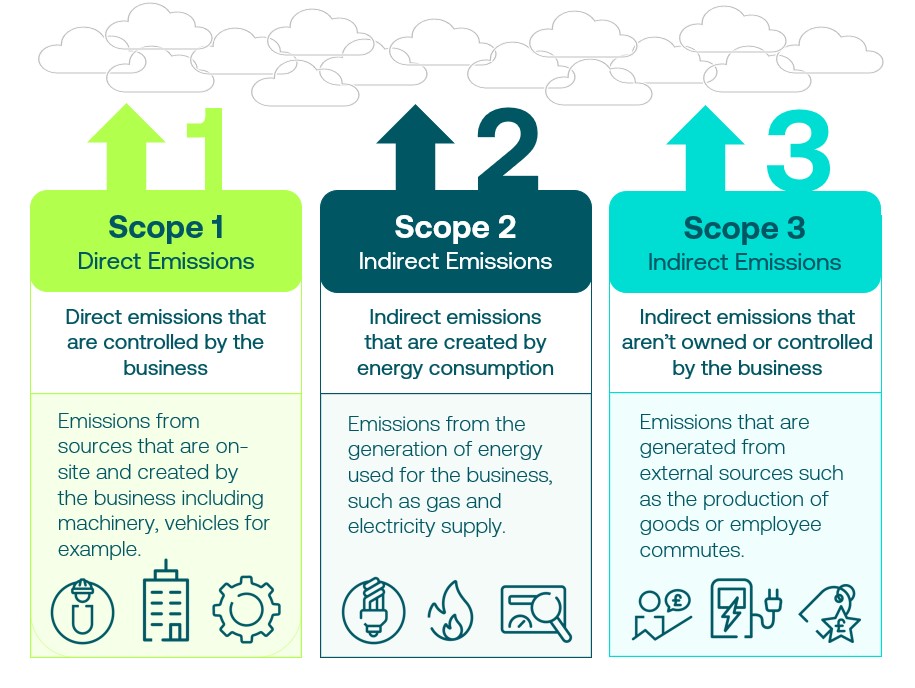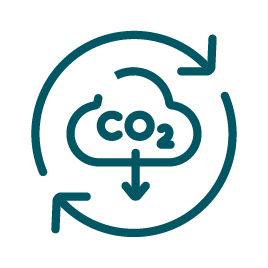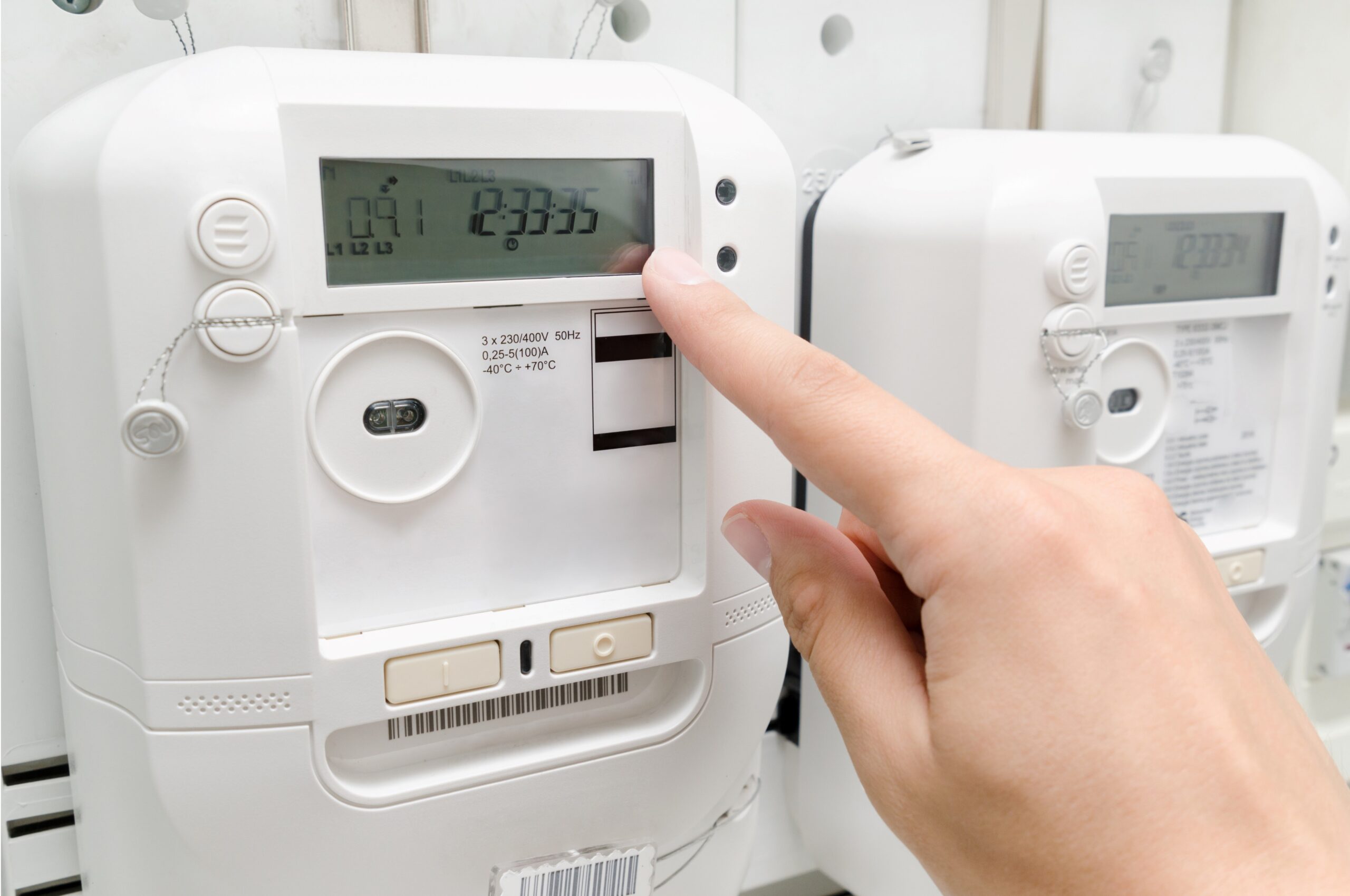What are greenhouse gases vs carbon emissions?
Greenhouse gases are in the earth’s atmosphere and play a crucial role in maintaining the temperature of our climate. However, human activities such as burning fossil fuels for energy generation and deforestation for infrastructure have significantly increased these gases which causes the earth to warm, resulting in climate change.
Alternatively, carbon emissions refers to the specific release of carbon dioxide (CO2) into the atmosphere. Business processes such as burning fossil fuels, industrial processes, landfill waste and even agricultural practices all impact how much carbon is released into the air, increasing global warming. This is why it’s vital that we work together with the UK small business community to address carbon emissions, understanding what contribution we make and how we can reduce them.

The Emission Breakdown
The greenhouse gas emissions are categorised into scopes to better understand their sources. These help you to understand where your emissions come from, in turn helping small businesses create more effective CO2 reduction strategies.
Scope 1: Direct emissions.
These are from owned or controlled sources, like company vehicles or machinery, or on-site gas boilers, for example.
Scope 2: Indirect emissions (energy consumption).
This category includes emissions resulted from the generation of purchased energy, such as electricity, heating, or air con. These are off-site but directly correlate with your business activities.
Scope 3: Indirect emissions (supply chain and all others).
Emissions from other indirect sources that aren’t owned or controlled by the business. They often extend through the supply chain (such as the production of goods) and can be tricky to reduce. This also includes employee commutes and the use of products after purchase.

How can I reduce my business’ carbon emissions?
On your journey to carbon neutrality or net zero emissions, it may be helpful to prioritise addressing activities that fall under scopes 1 and 2 initially, for your business can directly manage the energy output. This may include reducing your energy usage by switching off lights or switching to a green energy supply.
If you’re aiming for more ambitious emission reductions, it’s important to consider scope 3. Using your buying power to support eco-conscious suppliers could help to initiate their journey to net zero too. You could start by researching suppliers with smaller carbon footprints and comparing them to your current supply chain participants.
All efforts to reduce carbon emissions are important, whether it’s transitioning to a renewable energy contract, helping reforestation efforts, or adjusting your supply chain to include sustainable technologies. Find out more about how you can make a green difference below.



